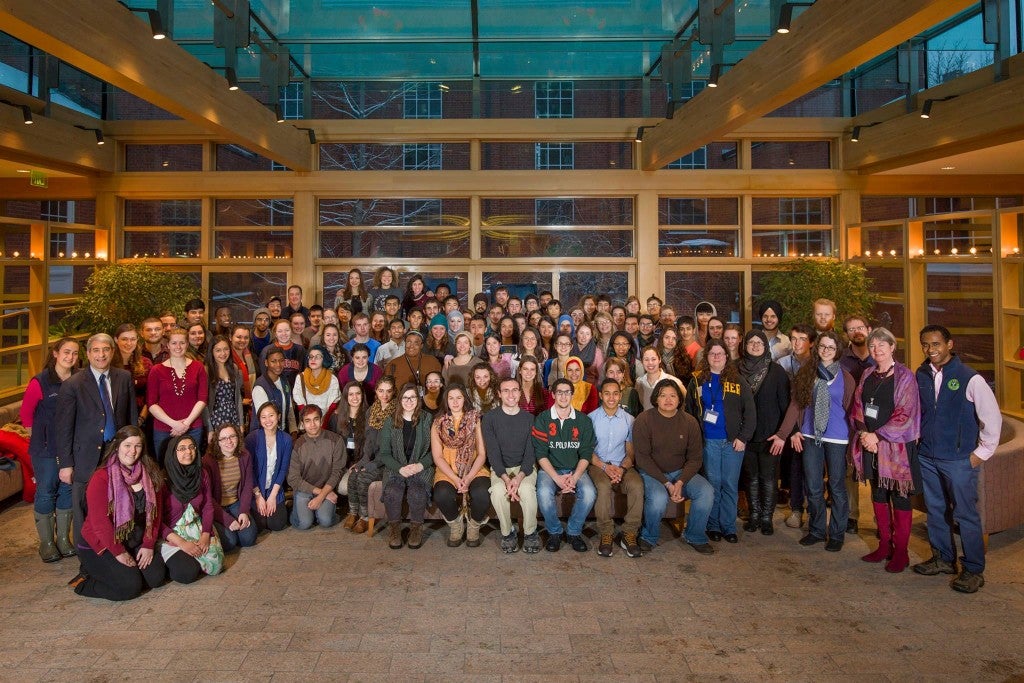Reflections on Interfaith and Jesuit Identity After the Yale Coming Together 7 Conference
Before I came to Washington, D.C. for college, I grew up in a mid-sized Midwestern town. Although my public high school was on the whole largely homogenous, I was lucky to have friends from a variety of religious backgrounds. My experiences understanding my own Catholic faith and my place in the world as a teenager were interwoven with lunch-table discussions of karma and reincarnation and with solidarity Fast-a-thons during Ramadan. I was drawn to Georgetown University in part because of its commitment to engaging “interreligious understanding” and “community in diversity,” and when I arrived as a freshman I was captivated by the banners around campus touting the “Spirit of Georgetown” with these phrases alongside other Jesuit buzzwords like “cura personalis” and “men and women for and with others.”
Over the past four years, I have been able to engage in interfaith work in many different ways — as a member of and leader in the Interfaith Student Association and as a research assistant at the Berkley Center for Religion, Peace, and World Affairs; through involvement in social justice programs and most of all through informal, late-night, or unplanned conversations with those whose backgrounds are different from mine. At the same time, I’ve come to understand the Ignatian identity more deeply, and I’ve seen how Jesuit schools are perhaps uniquely positioned among other universities to foster interfaith dialogue and action. Jesuit schools like Georgetown can and should make interfaith a top priority, on a level that goes beyond the buzzwords and banners.
Nowhere has this special opportunity and obligation been more apparent to me than at the Coming Together 7 conference I attended in February at Yale University. In speaking with students from schools all over the country and learning about their interfaith efforts, I was increasingly grateful not only for the practical institutional support that such work receives at my school, but also for the rootedness of this support. To have “interreligious understanding” as an explicit part of a school’s mission, as it is at Georgetown, is no small thing. Many students trying to engage in interfaith work, especially those at secular institutions, do not have this advantage.
Jesuit schools are well-positioned to be leaders in the interfaith movement, not only on college campuses but in American society and around the world. Every day, news stories remind us of the critical role that religion has played in the historical dynamics that continue to shape the reality of our planet, and of the powerful significance of interreligious understanding in modern conflicts, discourses, and interactions. In order to truly build a community in diversity and further interreligious understanding, however, we all must understand that we cannot rely on a mission to bring itself to life. At Jesuit schools, our commitment to interfaith work needs to remain dynamic. Igniting the Ignatian charism involves an embracing of active contemplation and dialogue, a focus on global citizenship, and a recognition of the inherent dignity of all traditions.
If you have not yet been involved in an interfaith dialogue or attending the religious services from a tradition other than your own, now is the time to do so! If you have engaged interfaith already at Georgetown, go beyond surface-level dialogue! It is time that we — as individuals and groups — engage non-Abrahamic faiths and underrepresented traditions, that we include agnostic and atheist voices in the conversation, and that we connect students, staff, faculty, and chaplains so that all of the various interfaith efforts that already exist at Georgetown can collaborate to foster an environment where interreligious dialogue and action is part of mainstream university culture.
Hopey Fink, COL’15
- Tagged
- Interfaith

